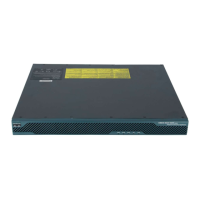Configuring AAA Services on Cisco IOS XR Software
How to Configure AAA Services
SC-194
Cisco IOS XR System Security Configuration Guide
Configuring RADIUS Dead-Server Detection
This task configures the RADIUS Dead-Server Detection feature.
The RADIUS Dead-Server Detection feature lets you configure and determine the criteria that is used to
mark a RADIUS server as dead. If no criteria is explicitly configured, the criteria is computed
dynamically on the basis of the number of outstanding transactions. The RADIUS dead-server detection
configuration results in the prompt detection of RADIUS servers that have stopped responding. The
prompt detection of nonresponding RADIUS servers and the avoidance of swamped and
dead-to-live-to-dead-again servers result in less deadtime and quicker packet processing.
You can configure the minimum amount of time, in seconds, that must elapse from the time that the
router last received a valid packet from the RADIUS server to the time the server is marked as dead. If
a packet has not been received since the router booted, and there is a timeout, the time criterion is treated
as though it was met.
In addition, you can configure the number of consecutive timeouts that must occur on the router before
the RADIUS server is marked as dead. If the server performs both authentication and accounting, both
types of packets are included in the number. Improperly constructed packets are counted as though they
are timeouts. Only retransmissions are counted, not the initial transmission. For example, each timeout
causes one retransmission to be sent.
Note Both the time criterion and the tries criterion must be met for the server to be marked as dead.
The radius-server deadtime command specifies the time, in minutes, for which a server is marked as
dead, remains dead, and, after this period, is marked alive even when no responses were received from
it. When the dead criteria are configured, the servers are not monitored unless the radius-server
deadtime command is configured
SUMMARY STEPS
1. configure
2. radius-server deadtime minutes
3. radius-server dead-criteria time seconds
4. radius-server dead-criteria tries tries
5. end
or
commit
6. show radius dead-criteria host ip-addr [auth-port auth-port] [acct-port acct-port]

